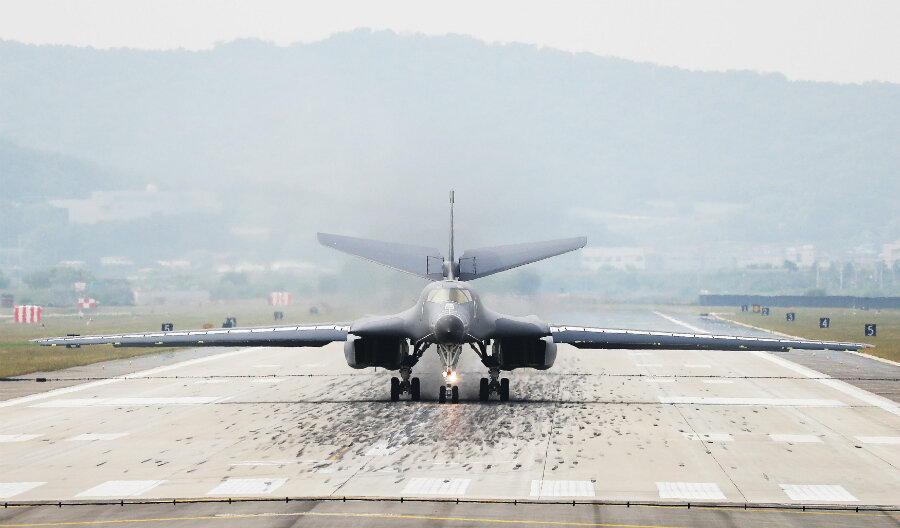Why did the US again fly supersonic bombers over South Korea?
Loading...
The United States flew two supersonic bombers over South Korea on Wednesday, the second such flight in two weeks’ time, in the latest display of military might amid renewed tensions with North Korea.
US Forces Korea called the flight, by B-1B bombers based in Guam, a show of the United States solidarity with South Korea and commitment to regional security.
"What we are showing today is just one tool we have to choose from a wide array of options. The alliance grows stronger every day and we remain prepared to defend and to preserve the security of the Korean Peninsula and the region," Lt. Gen. Thomas Bergeson, commander of the U.S. 7th Air Force in South Korea, said in a statement, according to the Associated Press.
The flyover comes less than two weeks after North Korea conducted its fifth and most powerful nuclear test to date, boasting afterward that the detonation of a nuclear warhead proved it was capable of producing “standardized” nuclear weapons that could be delivered via missile. And last Tuesday, the US conducted a similar flyover with B-1B bombers escorted by US and South Korean jets.
The B-1Bs do not carry nuclear weapons, in accordance with the terms of a disarmament treaty, though generally, experts consider them nuclear-capable. On Wednesday, the US Air Force called it “the closest [flight] ever to North Korea by a B-1 bomber.” North Korea’s government often cites such maneuvers as proof of the imminent threat posed by the United States – as well as the reason it needs a nuclear program.
About 28,500 US troops are stationed in South Korea, which has no nuclear weapons and depends on the “nuclear umbrella” of the United States to deter its northern neighbor. In July, South Korea and the US announced that they had reached a deal on a new missile-defense system known as THAAD, following an increase in tests by the North.
The announcement riled Pyongyang and caused consternation in China, the North’s principal trading partner and diplomatic ally, as Jason Thomson wrote for The Christian Science Monitor at the time.
China, in particular, has decried the move, saying it will destabilize an already fragile region and negatively affect “world peace.” The question, then, is whether the defensive capabilities THAAD provides will outweigh the diplomatic ripples – and other reactions – it may provoke.
“I certainly don’t believe THAAD or any missile defense is a panacea,” says Jonathan Pollack, Interim SK-Korea Foundation Chair in Korea Studies, Center for East Asia Policy Studies, at the Brookings Institution in Washington, D.C. “But if it inhibits North Korea, under some extreme circumstances, from using its capabilities, and instills some confidence in the government of South Korea to defend key assets and population areas in a more integrated fashion, then it’ll be money well spent.”
One of the fundamental questions: How much of a threat does North Korea actually pose to South Korea? The simple answer to that question is that nobody seems to know, bar the regime in Pyongyang, but the rhetoric – and continued missile and nuclear tests – seems intended to instill fear.
UN diplomats say preparations are under way for a possible resolution in response to this month’s nuclear test by Pyongyang, though it’s unclear whether China will support them.
This report contains material from Reuters and the Associated Press.






